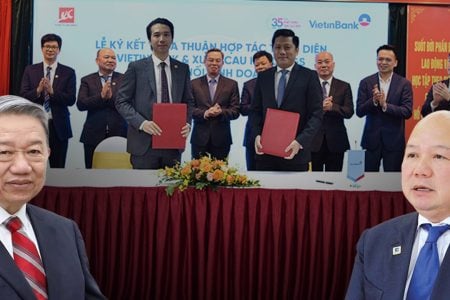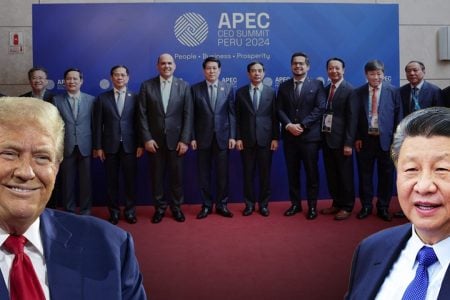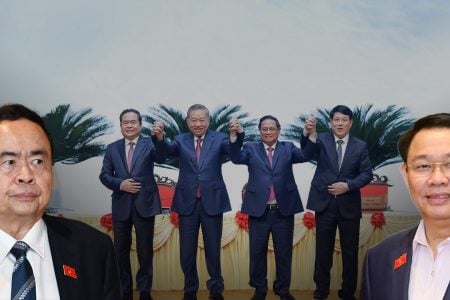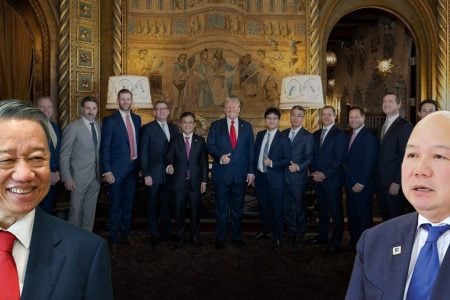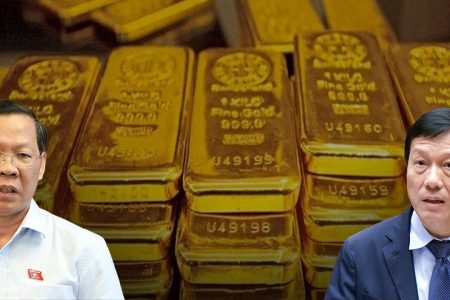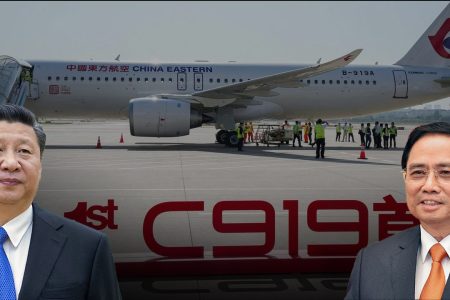
At the COP26 climate conference in Glasgow, Scotland, on November 4, 2021, about 40 countries, including Vietnam, along with many territories and organizations, pledged to gradually stop using coal in thermal power plants. The countries participating in this agreement commit not to invest in new coal power plants at home and abroad.
According to a plan announced by the British government, rich countries will gradually reduce coal power generation in the 2030s. This period will be extended to the 2040s for poor countries, including Vietnam.
The above commitment of Vietnam has received international attention because Vietnam is currently one of the largest users of coal power in the world. But how can we understand Vietnam’s commitment? In an interview with the RFI Vietnamese Language on November 8, 2021, Professor Pham Duy Hien, former Director of the Da Lat Atomic Institute, commented:
“If such a commitment is made, there can be many interpretations that from 2050 on, Vietnam will no longer have coal power. In other words, from now on, there will be no plans to build new coal power plants, only those under construction will continue. Understanding like that, it is also seen that it will be very difficult for Vietnam.
But according to the plan called Power Master Plan 8 for the period 2021-2030, and beyond, by 2045, a plan is currently attracting a lot of attention, but has not been officially approved because of many difficulties, from now By 2031, which is nearly 15 years from now, Vietnam will build 27 more coal-fired power plants, with a total capacity of 31,000 MW. The number of such plants and total capacity is very high, while Vietnam is currently ranked 11th in the world in terms of coal power capacity. Therefore, the statement of the Vietnamese Prime Minister at COP26 is very interesting, because Vietnam is one of the ‘powerhouses’ in terms of coal-fired power.
To fulfill the Prime Minister’s commitment at COP26, first of all, we must deal with the 27 new coal-fired power plants that Vietnam plans to build. But what will replace those factories?”
The development direction of renewable energy and nuclear power
This will be a difficult problem because coal power still accounts for a very large proportion in Vietnam. According to statistics, by the end of 2020, Vietnam’s power system has 21,300 MW of coal power capacity, accounting for 30.8% of electricity capacity and 50% of electricity output. So what solutions can Vietnam choose to gradually give up coal power? Professor Pham Duy Hien suggested:
“Coal power plants now have to buy liquefied petroleum gas instead of coal, but liquefied petroleum gas is now very volatile in price and I don’t know if the supply is easy.
What about renewable energies that have been included in the plan, including solar power, which will account for 14% in 2030, and wind power will also account for 14%. I think that Vietnam has a very strong advantage in solar power, but it has only developed up to that level, it is difficult to get more.
Recently there is a Danish offshore wind project with a capacity of 4,000 MW. It is a very strong company in wind power, but that project is only 4,000 MW. In general, reviewing alternatives to coal-fired power plants, none of them are really easy to implement right away.“
Another way that can help to gradually abandon coal power, but still ensures sufficient energy supply for the economy, is nuclear power. But according to Professor Pham Duy Hien, for a country like Vietnam, only low-capacity reactors are appropriate:
“Is nuclear power in Vietnam likely to return and what will it solve for the 27 coal-fired power plants that we will give up? It is very difficult, because Vietnam had previously planned to include it, but by 2016 had to give up nuclear power.
It is worth noting that France, the world’s highest nuclear power producer, with nuclear power accounting for 70% of total electricity production, uses nuclear reactors of the 3+ generation, which are very modern.
However, President Macron recently did not talk about continuing in that direction but said that France will study low-power reactors, about 200 MW installed in modules.
Why did France abandon the old road and follow the new one, which is still being researched? What are the advantages of these furnaces? People produce modules, these modules are checked for quality at the factory, not brought to the construction site and then checked, and then caused many problems as France has seen in recent times. when supplying nuclear power plants to Finland, prolonging the time and increasing capital.
Thus, if Vietnam follows the path of nuclear power, it will have to wait for those low-capacity furnaces to be commercialized. At present, these kilns have not been commercialized, because of high prices and low orders. So, if countries jump in that direction, I’m sure by 2035, factories like this will be commercialized and Vietnam can follow this path.“
Review the issue of energy saving and efficiency
But in the immediate future, what Professor Pham Duy Hien often emphasizes is that, instead of only worrying about increasing supply, Vietnam must pay attention to energy saving while its energy efficiency is considered the worst in the Asia-Pacific region:
“We can’t always talk about supplies, but now we have to talk about reducing demand for electricity. In other words, it is necessary to increase energy saving and efficiency. Comparing Vietnam with about 30 countries in the Asia-Pacific region, based on scientific criteria to evaluate science, Vietnam’s energy efficiency is the lowest, not only compared to other advanced countries such as Japan and Singapore but also compared to more backward countries such as the Philippines and Indonesia.
So now it’s time to discuss this issue seriously, not just worry about what the power supply is, be it gas, coal, nuclear power, or renewable energy, but look at the other side, ie the demand side, have we done well. The ‘green growth’ that people talk a lot about must have two sides: the power supply must be a green source, for example, renewable energy, but another side is the demand side, which must be used effectively, without wasting energy costs.
The supply and demand sides of the green growth problem are like two sides of the same coin. In Vietnam, there is little talk about this, always thinking that if there is a shortage of electricity, one must build more factories, if this option does not work, then do another, but do not think that doing so is good or bad.
The most electricity used in Vietnam is electricity for manufacturing. No one has considered how effective it is, there is not a single study published to the state that its effectiveness is not good. In my research works, I have proved very clearly that the current Vietnamese use of energy is not efficient in production and manufacturing. Vietnam pays too much attention to the results of the production of goods but does not pay attention to how much electricity it takes to make those goods. If electricity usage in Vietnam is as efficient as that of other countries in the region, including China, then there is no need to build many factories, especially coal power plants, which can still ensure a relatively normal growth for Vietnam.
Of course, doing this will touch a lot, because it touches the energy user. The way that the world often uses, especially in the market mechanism, is based on price leverage. The price of electricity will be huge leverage. But if we touch on prices in Vietnam, there is a difficulty that people are afraid that people will not agree, which will cause chaos.
However, our current job, as well as that of the whole world, is very big: to save the life of this earth for our children and grandchildren. If we see it as a priority for our children and grandchildren, then we must find a way to solve the problem of using electricity and change our consciousness, which must first come from the leader. You should not think that whenever there is a shortage of electricity, you will build more factories, if you lack coal, you will buy more coal, but it is not easy to buy coal now because the price is getting more and more expensive. So solving the current problem means solving the whole problem of economic structure, the problem of energy supply and demand.“
Thoibao.de (Translated)









